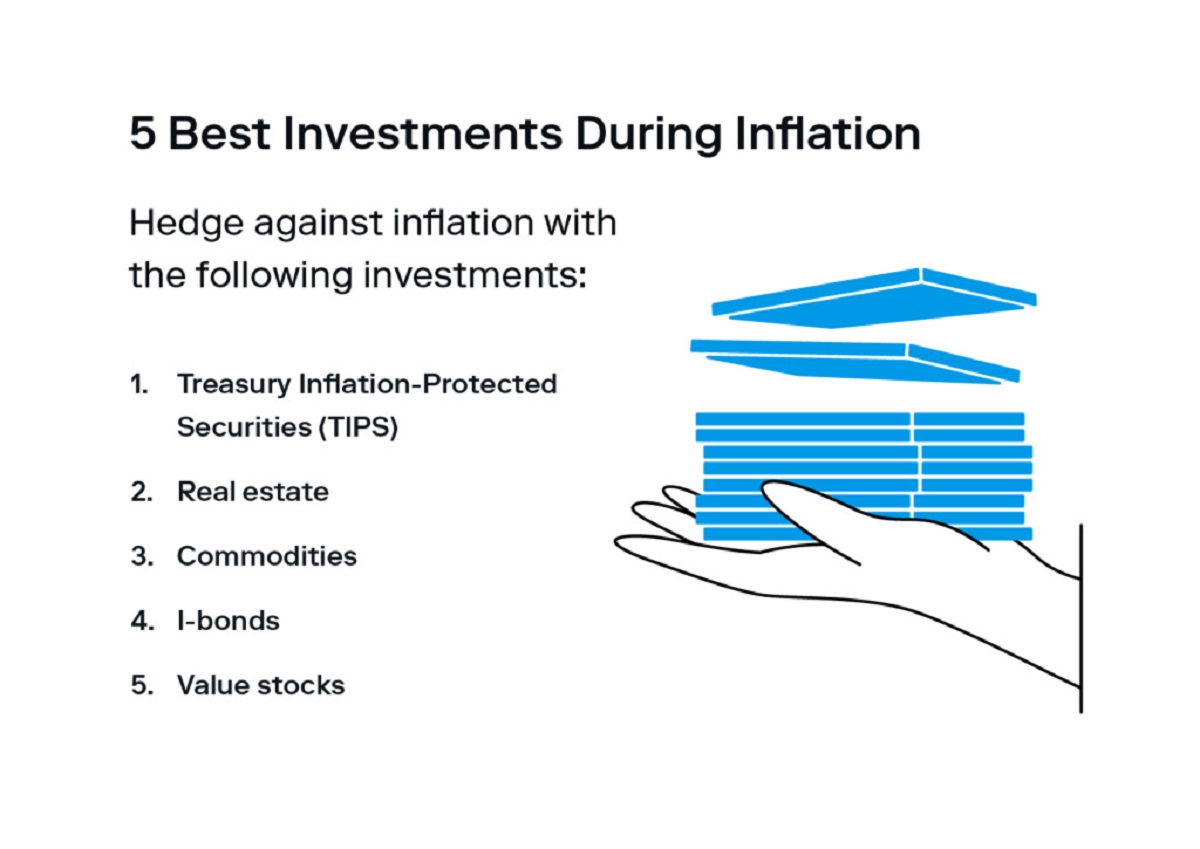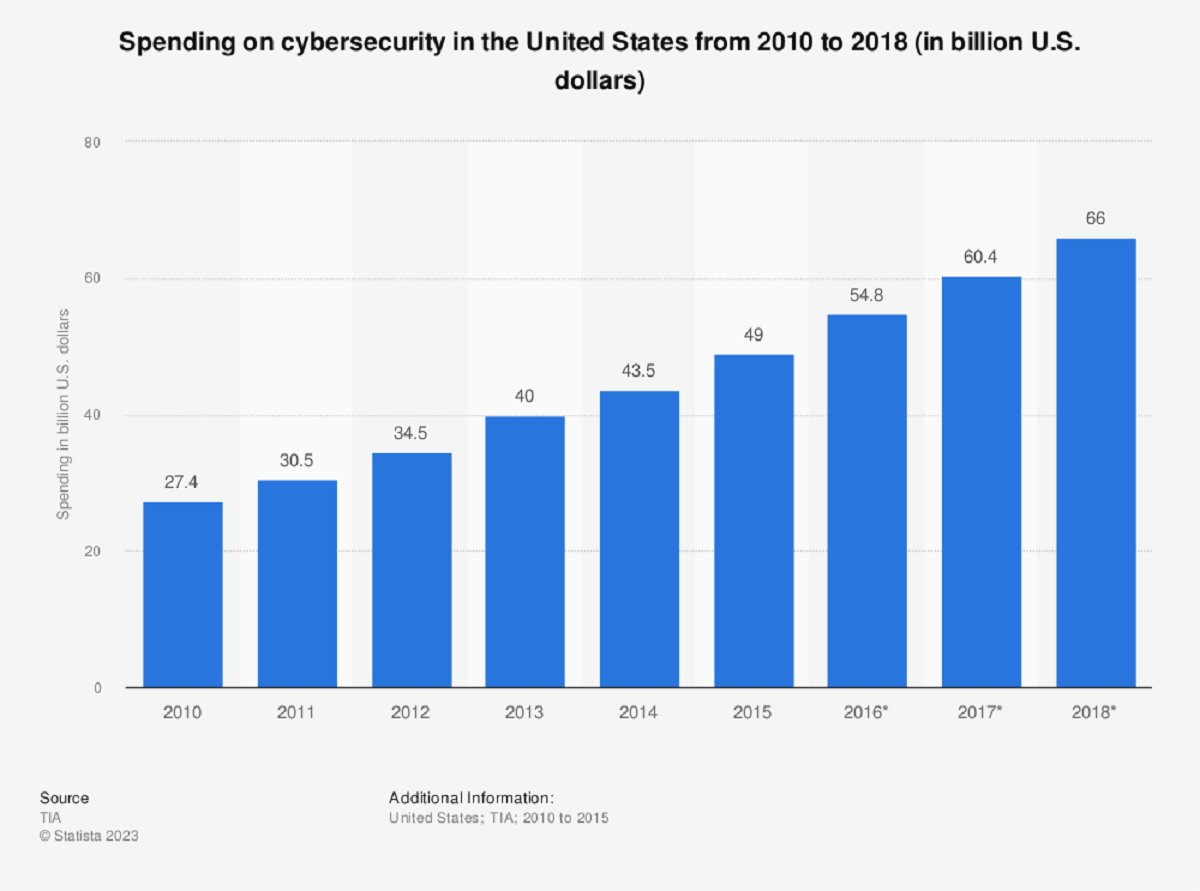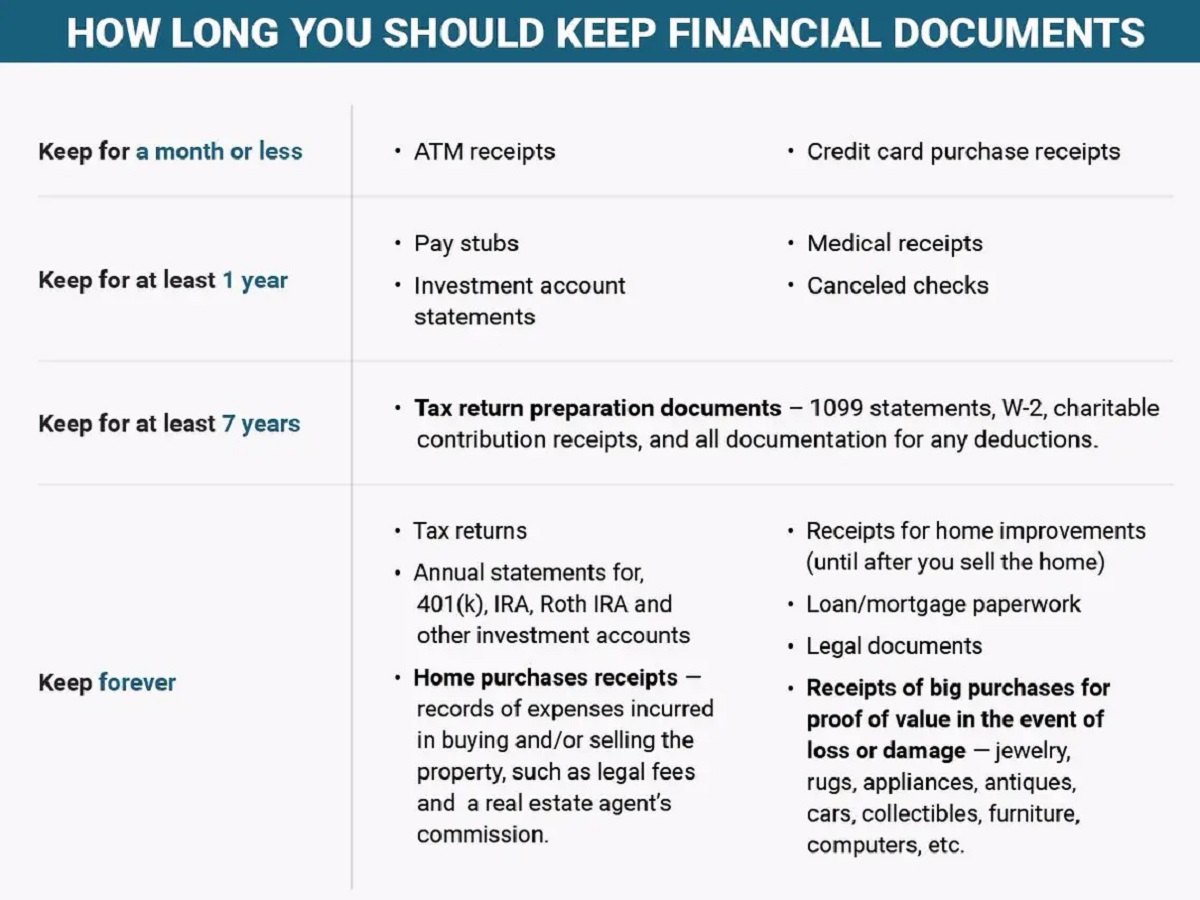Introduction
Investing is a crucial step towards securing our financial future. Whether you’re saving for retirement, planning for a major purchase, or building wealth, protecting your investments should be a top priority. While investing comes with a certain degree of risk, there are steps you can take to mitigate potential losses and safeguard your hard-earned money.
In this article, we will discuss ten strategies to protect your investments. By following these guidelines, you can gain confidence in your investment decisions and minimize the impact of market fluctuations. From diversifying your portfolio to seeking professional advice, we will cover the essential steps to safeguard your investments and improve your long-term financial outlook.
It’s important to note that protecting your investments is not a guarantee against potential losses. However, by implementing these strategies, you can create a more resilient and balanced portfolio that can weather market volatility and potentially provide better returns in the long run.
Remember that investing is a long-term endeavor, and it’s essential to approach it with patience and a well-thought-out plan. By taking proactive steps to protect your investments, you can better navigate the dynamic landscape of the financial markets and increase your chances of achieving your financial goals.
Now, let’s dive into the ten strategies that will help protect your investments and provide you with peace of mind on your financial journey.
Diversify Your Portfolio
A key strategy to protect your investments is diversifying your portfolio. In simple terms, diversification means spreading your investments across different asset classes, sectors, and geographical regions. By doing so, you can reduce the risk of concentration in any single investment and potentially minimize the impact of market fluctuations.
When you diversify your portfolio, you allocate your investments across a mix of stocks, bonds, mutual funds, ETFs, and other asset classes. This approach ensures that if one investment underperforms, the others may offset those losses. It’s important to note that diversification does not guarantee profits or protect against losses entirely, but it can help provide a hedge against market volatility.
Consider investing in different sectors such as technology, healthcare, finance, and consumer goods. Additionally, you can diversify across different regions by including international stocks and funds in your portfolio. This way, you’re not solely reliant on the performance of one sector or one country’s economy.
Another aspect of diversification is asset allocation. By spreading your investments across different asset classes, such as stocks, bonds, and cash equivalents, you can further balance risk and potentially generate more stable returns over time. The allocation should be based on your risk tolerance, financial goals, and investment horizon.
Furthermore, diversifying within each asset class can provide an added layer of protection. For example, in the stock market, you can invest in companies of various sizes and across different industries. This way, not all of your investments are dependent on the success or failure of one particular company or sector.
Remember, diversification is about finding the right balance between risk and potential return. It’s important to regularly review and rebalance your portfolio to ensure it remains aligned with your investment objectives and risk tolerance. By diversifying your portfolio effectively, you can enhance the stability and resilience of your investments and minimize the impact of market downturns.
Stay Informed
When it comes to protecting your investments, knowledge is power. Staying informed about the latest financial news, market trends, and economic indicators can help you make informed investment decisions and react appropriately to changing market conditions.
One of the first steps to staying informed is to regularly read financial publications, websites, and newsletters. These sources provide valuable insights into market trends, investment strategies, and expert opinions. Additionally, following reputable financial news channels and podcasts can keep you updated on the latest developments in the financial world.
It’s also essential to keep an eye on economic indicators such as GDP growth, inflation rates, interest rates, and employment data. Understanding how these factors impact the markets can give you an edge in making informed investment decisions.
Moreover, monitoring your investments regularly is crucial. Stay vigilant about the performance of your portfolio and make adjustments as needed. This includes reviewing your investment allocations, assessing the performance of individual investments, and evaluating any changes in your risk tolerance.
Consider setting up alerts or using investment tracking tools to stay updated on your portfolio’s performance. This way, you can quickly identify any potential issues or opportunities and take appropriate action.
Another valuable resource for staying informed is networking with other investors or joining investment groups. Engaging in discussions and sharing experiences can provide valuable insights and perspectives that you may not have considered.
Lastly, don’t underestimate the power of continuous learning. Take advantage of educational resources, online courses, and seminars to enhance your knowledge of investing. This can help you make more confident and informed investment decisions.
By staying informed, you can better navigate the complexities of the financial markets and make well-informed decisions to protect your investments.
Set Realistic Expectations
When it comes to investing, it’s essential to set realistic expectations. While we all aspire to achieve high returns on our investments, it’s important to understand that investing involves risks, and there are no guarantees of achieving extraordinary profits.
Firstly, it’s crucial to have a clear understanding of your financial goals and time horizon. Different investment strategies are appropriate for various goals. For example, if you’re investing for retirement, a long-term approach may be more suitable, whereas if you’re saving for a short-term goal, a more conservative strategy may be advisable.
Once you have established your goals, it’s important to set realistic expectations regarding the potential returns on your investments. Historical performance data can provide insights into past market trends, but it doesn’t guarantee future results. Market conditions and economic factors can change, impacting the performance of your investments.
Be cautious of investment schemes or strategies that promise unrealistic returns or low-risk opportunities. If something seems too good to be true, it probably is. It’s crucial to conduct thorough research and seek advice from trusted financial professionals before making any investment decisions.
Additionally, it’s important to understand that investment returns fluctuate over time. Markets go through cycles of ups and downs, and it’s normal for your investments to experience periods of volatility. Setting realistic expectations helps you maintain a long-term perspective and avoid making emotional decisions based on short-term market movements.
Moreover, diversification plays a role in setting realistic expectations. By spreading your investments across different asset classes and sectors, you can decrease the impact of any single investment’s performance on your overall portfolio. This helps manage the risk and volatility associated with investing.
Remember that investing is a journey, and it’s essential to have a disciplined and patient approach. By setting realistic expectations, you can align your investment strategy with your financial goals and avoid unnecessary disappointment or panic during turbulent market conditions.
Ultimately, a realistic outlook on investing helps you make informed decisions and maintain a long-term focus, increasing the likelihood of achieving your financial objectives.
Invest for the Long Term
One of the fundamental principles of successful investing is taking a long-term approach. While it can be tempting to get caught up in short-term market fluctuations, investing with a long-term perspective can help protect your investments and potentially maximize returns.
When you invest for the long term, you allow your investments to benefit from the power of compounding. Compounding refers to the ability of an investment’s earnings to generate additional returns over time. By staying invested in the market for an extended period, you give your investments the opportunity to grow exponentially.
It’s important to note that long-term investing does not mean completely ignoring your investments. Regular monitoring and occasional adjustments may be necessary, but these decisions should be based on your long-term investment strategy rather than short-term market movements.
Market volatility is inevitable, but historically, the markets have shown an upward trend over the long term. Short-term market fluctuations can be noise that distracts investors from their long-term goals. By focusing on the bigger picture, you can ride out the short-term market swings and benefit from the long-term growth potential of your investments.
Additionally, investing for the long term helps mitigate the impact of market timing. Trying to predict the best time to buy or sell investments is extremely challenging, even for seasoned professionals. By adopting a long-term investment strategy, you reduce the need to time the market and instead focus on staying invested in quality assets over time.
Another advantage of long-term investing is the potential tax benefits. Depending on your jurisdiction, long-term capital gains may be taxed at a lower rate compared to short-term gains. By holding your investments for the long term, you can potentially minimize your tax liabilities and increase your overall returns.
Ultimately, investing for the long term requires patience and discipline. It means staying committed to your investment strategy even during periods of market uncertainty or volatility. By doing so, you can take advantage of market upswings and give your investments the best chance to grow and provide you with the financial security you desire in the long run.
Regularly Rebalance Your Portfolio
As an investor, it’s crucial to regularly review and rebalance your portfolio to maintain its intended risk and return profile. Rebalancing involves adjusting your investment allocations periodically to ensure they align with your original asset allocation strategy.
Over time, certain investments in your portfolio may outperform or underperform others, resulting in a shift in the overall asset allocation. This can lead to a portfolio that is either riskier or more conservative than desired. Regular rebalancing allows you to bring your portfolio back to its intended allocation and manage risk effectively.
Rebalancing typically involves selling some assets that have performed well and using the proceeds to purchase assets that have underperformed. By doing so, you are essentially buying low and selling high, which is a fundamental principle of investing.
There are several methods to determine when to rebalance your portfolio. Some investors rebalance on a predetermined schedule, such as annually or semi-annually. Others rebalance when their portfolio deviates from their target allocation by a certain percentage, such as 5% or 10%.
It’s important to note that rebalancing should not be based on short-term market movements or emotions. Instead, it should be driven by your long-term investment strategy and financial goals. Following a disciplined approach to rebalancing helps maintain the desired risk and reward characteristics of your portfolio.
Rebalancing also provides an opportunity to reassess your investment strategy and make adjustments if necessary. Changes in your financial situation, risk tolerance, or investment goals may warrant a revision of your asset allocation. By regularly rebalancing, you can adapt your portfolio to reflect any changes in your circumstances.
Keep in mind that rebalancing may involve transaction costs, such as brokerage fees or taxes. It’s important to factor in these costs when determining the frequency and magnitude of rebalancing.
Overall, regularly rebalancing your portfolio ensures that your investments stay true to your risk tolerance and long-term objectives. It helps manage risk, avoids excessive concentration in certain investments, and maintains the desired asset allocation. By rebalancing, you can stay on track with your investment strategy and protect your investments over time.
Consider Risk Tolerance
Understanding and considering your risk tolerance is a crucial step in protecting your investments. Risk tolerance refers to your ability and willingness to tolerate fluctuations in the value of your investments.
Everyone has a different risk tolerance based on their financial goals, time horizon, and personal preferences. Some investors are comfortable with taking on higher levels of risk in pursuit of potentially higher returns, while others prefer a more conservative approach to limit potential losses.
To assess your risk tolerance, it’s important to evaluate factors such as your investment knowledge and experience, financial stability, investment goals, and time horizon. Additionally, considering how you would react to a significant loss in your portfolio can provide insights into your risk tolerance.
An investor with a high risk tolerance may be willing to allocate a larger portion of their portfolio to riskier assets such as stocks, while an investor with a lower risk tolerance may favor more conservative investments like bonds or cash equivalents.
It’s essential to strike a balance between risk and reward by aligning your investment strategy with your risk tolerance. Investing too conservatively may limit your potential for significant growth, while investing too aggressively may expose you to excessive volatility and potential losses.
If you find that your risk tolerance has changed over time or is not in line with your current investments, it may be necessary to adjust your portfolio accordingly. This can involve diversifying across different asset classes, adjusting the allocation between stocks and bonds, or exploring investment options that better match your risk profile.
It’s worth noting that risk tolerance is not a static characteristic and may evolve as your financial situation and investment experience change. Regularly reassessing your risk tolerance and adjusting your investment strategy accordingly can help protect your investments and ensure they align with your current circumstances.
Consulting with a financial advisor can be beneficial in determining your risk tolerance and designing an investment portfolio that suits your individual needs. Their expertise can help you navigate the complexities of risk management and provide personalized advice based on your unique financial situation.
By considering your risk tolerance and aligning your investments accordingly, you can strike a balance between risk and reward, ultimately protecting your investments and achieving your long-term financial goals.
Explore Investment Options
Protecting your investments involves exploring and diversifying your investment options. While traditional stocks and bonds are popular choices, there is a wide range of investment avenues available that can help you achieve your financial goals while managing risk.
One option to consider is investing in mutual funds or exchange-traded funds (ETFs). These funds provide access to a diversified portfolio of stocks, bonds, or other assets, managed by professional fund managers. Investing in mutual funds or ETFs can help spread your risk across different securities and sectors, making them suitable for investors seeking diversification without the need for individual stock picking.
Real estate is another investment option worth exploring. Real estate can provide both income and potential appreciation over time. You can invest in physical properties, such as residential or commercial real estate, or consider real estate investment trusts (REITs), which are companies that own and manage income-generating properties. Real estate investments can provide stability and diversification to your portfolio, as they often have a low correlation with the stock market.
For those interested in alternative investments, options such as commodities, peer-to-peer lending, or hedge funds may be worth considering. These investment options typically have unique characteristics and risk profiles. However, it’s important to thoroughly research and understand the associated risks before venturing into these alternative investment avenues.
Furthermore, exploring international investment opportunities can help diversify your portfolio and take advantage of potential growth in different markets. Investing in international stocks or funds can provide exposure to economies and industries that may have a different growth trajectory than your domestic market.
Moreover, emerging technologies have opened up new investment options, such as cryptocurrencies and blockchain technology. While these assets offer unique opportunities, they also carry higher risks. It’s crucial to thoroughly research and understand the complexities of these investments before considering them.
Ultimately, the key is to diversify your portfolio by exploring different investment options that align with your risk tolerance and financial goals. The mix of investment options should reflect your desired level of risk and potential return.
It’s important to note that exploring investment options should be done with caution and thorough research. Seek advice from professionals or qualified financial advisors who can help you navigate the various options and make informed investment decisions.
By exploring a variety of investment options and diversifying your portfolio, you can mitigate risk and potentially enhance your long-term investment performance.
Monitor Your Investments
Monitoring your investments is a critical aspect of protecting and managing your portfolio effectively. Regularly reviewing the performance of your investments allows you to stay informed, make informed decisions, and take appropriate action when necessary.
First and foremost, it’s important to set up a system to track and monitor your investments. This can be done through online investment portals, portfolio management software, or working closely with a financial advisor who can provide updates and reports on your investments.
One key element of monitoring your investments is assessing their performance. Analyze the returns of individual investments, comparing them to relevant benchmarks or industry averages. This will help you understand how each investment is performing and whether it aligns with your expectations and investment goals.
Regularly reviewing the performance of your investments also provides an opportunity to identify any underperforming assets. If an investment consistently underperforms or doesn’t meet your expectations, it may be time to re-evaluate its place in your portfolio. Consider whether the investment’s fundamentals have changed, or if there are better alternatives available that offer higher potential returns or lower risk.
In addition to performance, it’s important to monitor the costs associated with your investments. High fees and expenses can eat into your returns over time, so it’s essential to review and compare the fees charged by different investment platforms, funds, or financial advisors. Ensure that you are getting value for your money and that the costs are justified by the performance and services provided.
Keep an eye on any news or events that may impact your investments. Market developments, regulatory changes, or company-specific news can have significant implications for your portfolio. Staying informed about relevant news will help you make informed decisions and react appropriately to any changes in the investment landscape.
Additionally, reviewing your asset allocation is essential to ensure that it remains in line with your risk tolerance and long-term goals. Over time, the value of different investments may fluctuate, causing your asset allocation to deviate from your desired target. Regularly rebalancing your portfolio, as mentioned earlier, helps bring it back to its intended allocation and manage risk effectively.
Lastly, monitoring your investments is an ongoing process that requires discipline and vigilance. Regularly scheduled portfolio reviews and performance assessments, as well as staying informed about the broader market and economic trends, are essential to protect your investments.
By actively monitoring your investments, you can identify and address potential issues, seize opportunities, and make informed decisions that align with your long-term financial goals.
Beware of Emotional Decisions
Emotions can have a significant impact on our investment decisions, often leading to irrational and detrimental actions. Fear, greed, and panic often drive us to make impulsive choices that can harm our investment portfolios. Protecting your investments requires being aware of these emotional tendencies and learning how to make logical, well-informed decisions.
One of the most common emotional pitfalls is letting fear dictate our actions. During market downturns or periods of volatility, it’s natural to feel anxious and want to sell off investments to avoid further losses. However, making investment decisions based on short-term market movements can lead to selling low and missing out on potential long-term gains.
Similarly, the excitement and greed associated with a rising market can lead to overconfidence and excessive risk-taking. Investing in a hot trend or speculative asset without proper analysis and risk assessment can have devastating consequences when the market corrects itself.
It’s essential to develop a sound investment strategy based on thorough research and analysis rather than succumbing to emotional impulses. By setting clear investment goals, identifying your risk tolerance, and adhering to a long-term plan, you can reduce the likelihood of making emotionally-driven decisions.
Having a well-diversified portfolio and sticking to a disciplined investment approach can also help mitigate emotional decision-making. Regularly rebalancing your portfolio and maintaining a mix of assets across different sectors and geographical regions can provide stability and minimize the urge to make impulsive changes.
Furthermore, seeking unbiased advice from a financial professional can provide a valuable perspective and counterbalance emotional biases. A financial advisor can provide objective guidance based on your financial goals, risk tolerance, and market conditions, helping you make rational investment decisions.
Lastly, it’s crucial to stay informed and educated about your investments. Understanding the fundamentals of the companies or assets you invest in, as well as studying historical market trends, can help alleviate knee-jerk reactions to short-term market fluctuations.
By being aware of your emotions and their potential impact on your investment decision-making process, you can protect your investments from unnecessary risks. Rational thinking, discipline, and a long-term perspective are key to making sound investment choices that align with your financial goals.
Seek Professional Advice
When it comes to protecting your investments, seeking professional advice can be a wise decision. Financial professionals, such as financial advisors or wealth managers, have the expertise and knowledge to help you navigate the complexities of investing and make informed decisions.
One of the primary benefits of seeking professional advice is the ability to tap into their experience and insights. Financial professionals have a deep understanding of market dynamics, investment strategies, and risk management techniques. They can provide personalized advice tailored to your specific financial situation, goals, and risk tolerance.
A financial advisor can help you develop a comprehensive investment plan that aligns with your long-term goals. They can assist in establishing an appropriate asset allocation, selecting suitable investments, and diversifying your portfolio effectively. This can help protect your investments and potentially maximize returns.
Moreover, financial professionals can provide objective guidance and a rational perspective during times of market volatility or emotional decision-making. They can help you stay focused on your long-term goals and prevent knee-jerk reactions to short-term market fluctuations.
In addition to investment advice, financial professionals can assist with other aspects of managing your finances, such as tax planning, estate planning, and retirement planning. They can help optimize your overall financial strategy by considering the broader implications of your investment decisions.
When choosing a financial advisor, it’s important to conduct thorough research and select someone who is qualified, trustworthy, and transparent. Look for professionals who have the necessary certifications, a track record of success, and a fiduciary duty to act in your best interest.
Remember that seeking professional advice does not mean relinquishing control of your investments. Instead, it allows you to leverage the expertise of a professional while remaining informed and involved in the decision-making process.
Working with a financial advisor is a collaborative effort. You should actively communicate your goals and concerns, ask questions, and review the advice provided. Regularly meeting with your advisor to assess your portfolio’s performance, discuss any changes in your circumstances, and revise your investment strategy as needed is crucial for protecting and optimizing your investments.
Ultimately, seeking professional advice can provide you with peace of mind and confidence in your investment decisions. By leveraging the expertise of financial professionals, you can effectively protect and grow your investments, increasing the likelihood of achieving long-term financial success.
Conclusion
Protecting your investments is crucial for securing your financial future and achieving your long-term goals. By following a strategic approach and implementing the ten strategies outlined in this article, you can create a resilient portfolio that can withstand market fluctuations and potentially provide better returns over time.
Diversifying your portfolio across different asset classes, sectors, and regions helps mitigate risk and minimize the impact of market volatility. Staying informed about financial news, economic indicators, and market trends allows you to make informed investment decisions and adjust your portfolio as needed.
Setting realistic expectations based on your risk tolerance and investment goals helps you stay focused and avoid making impulsive decisions based on short-term market movements. Investing for the long term allows you to benefit from the power of compounding and ride out market fluctuations.
Regularly rebalancing your portfolio maintains the desired asset allocation and manages risk effectively. Considering your risk tolerance when making investment decisions helps you strike the right balance between risk and return.
Exploring different investment options and diversifying your portfolio can help enhance stability and potential returns. Monitoring your investments regularly allows you to stay informed about their performance, costs, and any market developments that may impact your portfolio.
Avoiding emotional decisions helps protect your investments from irrational actions driven by fear, greed, or panic. Seeking professional advice provides valuable insights, personalized guidance, and a rational perspective to help you navigate the complexities of investing.
By implementing these strategies and remaining disciplined in your approach, you can protect your investments and increase your chances of achieving financial success in the long run. Remember that investing is a continuous journey and requires ongoing monitoring and adjustment based on your evolving financial circumstances and market conditions.
Take the necessary steps today to safeguard your investments and lay the foundation for a secure and prosperous financial future.

























